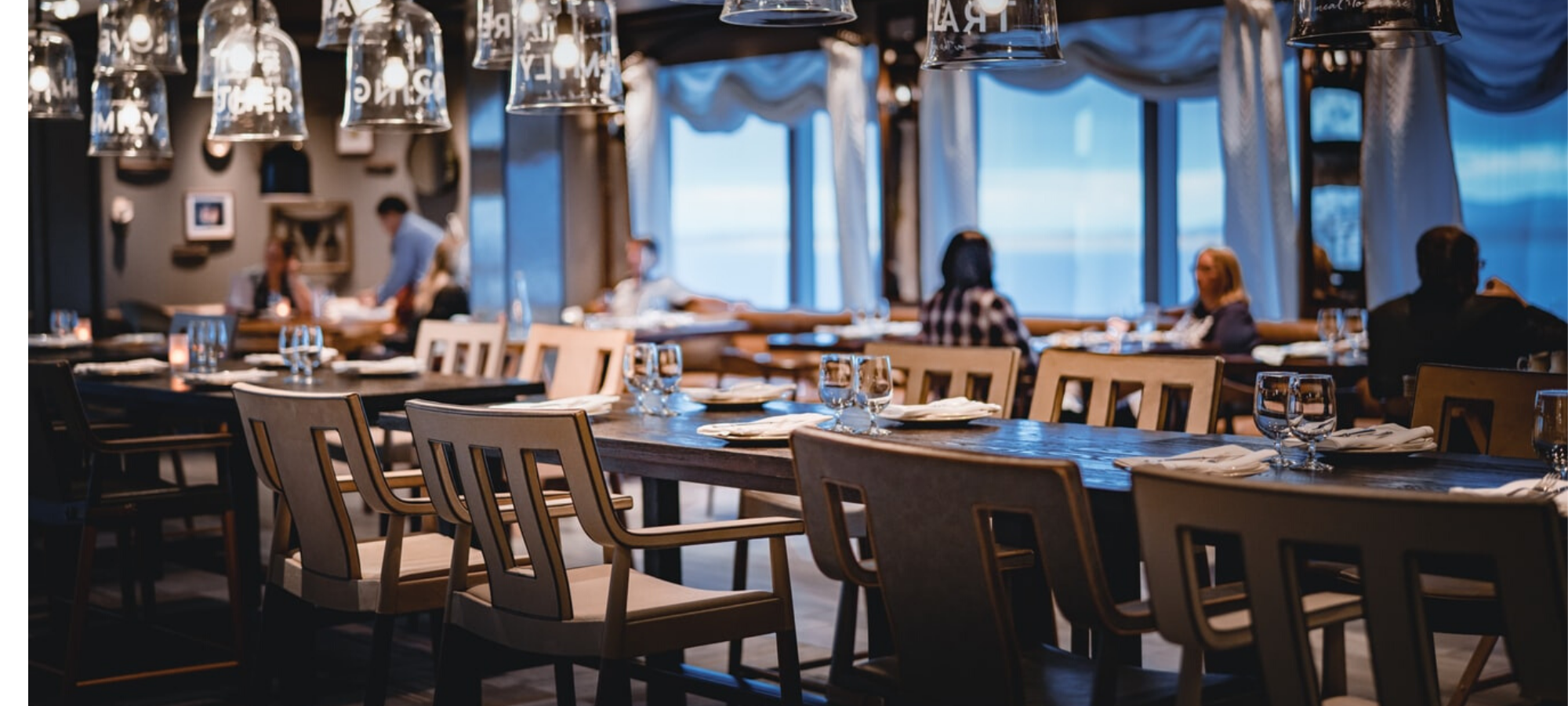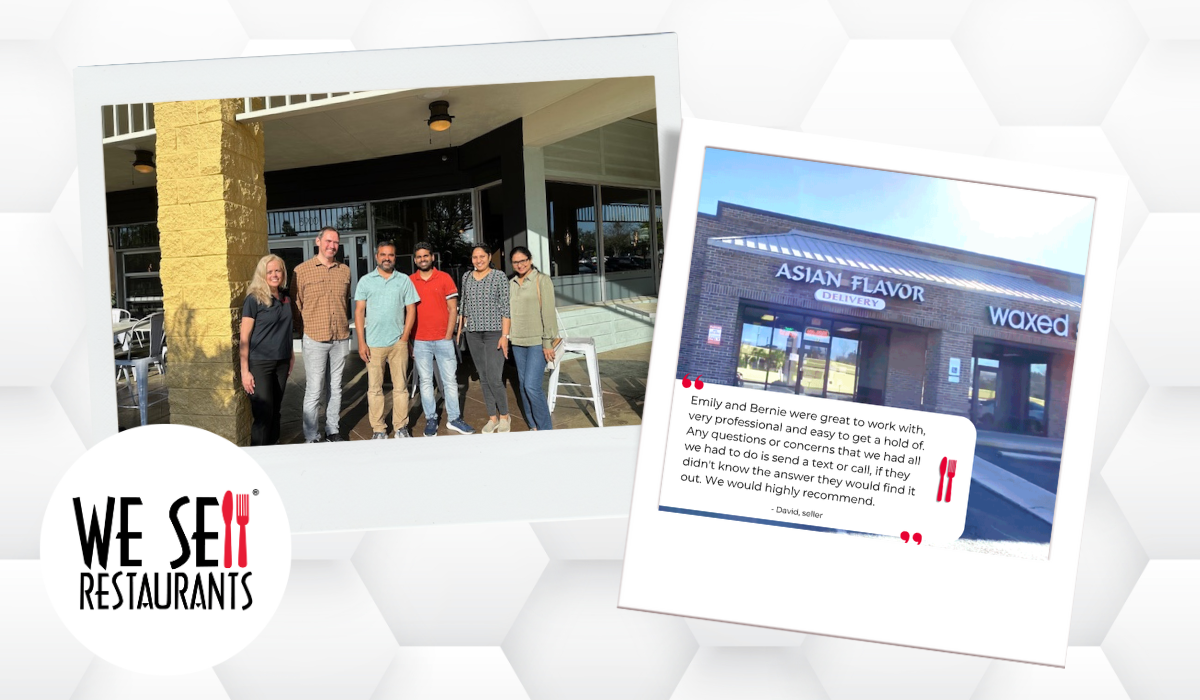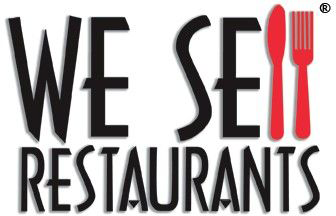One of our favorite writers at Nation's Restaurant News, Jonathan Maze has published a thought provoking article on the five reasons he believes independent restaurants are winning. His position highlights some recent industry research that shows that independent restaurants, not franchises are expected to gain market share in the coming years, and will grow at a higher rate. What's driving the growth? How are the David's of the business (independents) beating the Goliath's (franchises and chains)?
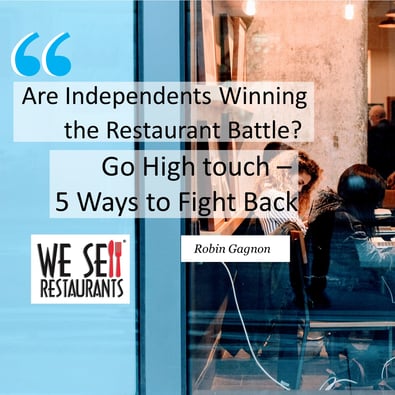 In these restaurant broker's opinion, it comes down to a concept made popular in the 1980's from the best-seller, Megatrends. The author, John Naisbitt, coined the phrase high tech, high touch. In high tech, the franchises or chains win every time. They have the social media departments who can tweet up a storm, keep their photos on Instagram and fill the overall social media feeds of the average consumer dozens of times a day. On the other hand, the independent restaurant has the upper hand on high touch. They don't fill your social media feed, just your coffee cup, over and over again without being asked. They also commit to their communities, not as part of a corporate plan but as part of their personal sense of belonging to the area. Is this paying off with consumers? You bet.
In these restaurant broker's opinion, it comes down to a concept made popular in the 1980's from the best-seller, Megatrends. The author, John Naisbitt, coined the phrase high tech, high touch. In high tech, the franchises or chains win every time. They have the social media departments who can tweet up a storm, keep their photos on Instagram and fill the overall social media feeds of the average consumer dozens of times a day. On the other hand, the independent restaurant has the upper hand on high touch. They don't fill your social media feed, just your coffee cup, over and over again without being asked. They also commit to their communities, not as part of a corporate plan but as part of their personal sense of belonging to the area. Is this paying off with consumers? You bet.
Research from Pentallect Inc., foodservice consulting firm, in conjunction with research partner Critical Mix, weighed the factors in the drive toward independents and their data is shown below. Independent restaurants are shown in blue on the chart against the grey for chains and independents. When asked to rate the following aspects as excellent or good, independents win on almost every metric including: Community Oriented, Is Special, Personalized Service, Shares my Value, Food Quality, Good Service, Innovative Menu, Decor/Atmosphere, Consistent Quality, Value for Money, Menu Variety. The two are tied on delivery. Where do the chains win? It's on use of technology, social media use and convenient location. Wow, no wonder David is stomping Goliath. They won on 11 out of 15 High Touch attributes, tied on one and were beaten on just three. Franchises/chains won only on High Tech - they get the win for social media, locations and the use of technology.
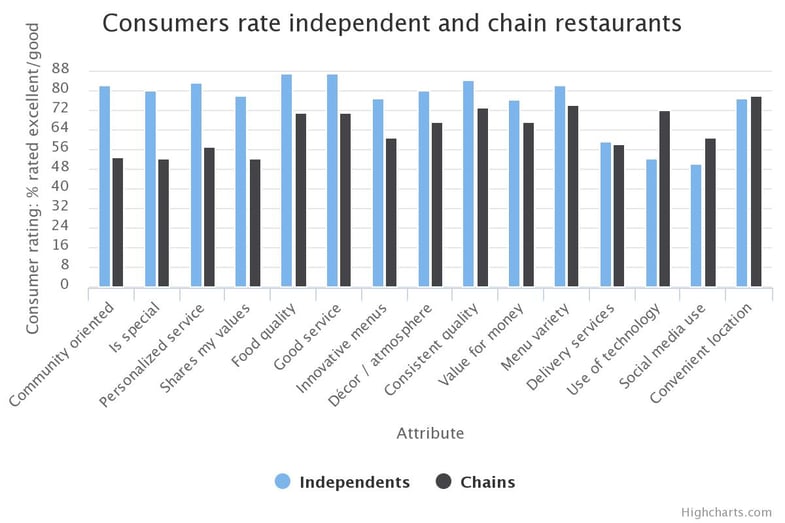
In Jonathan’s article, he posits five reasons this trend will continue including:
- Millennial buying power and their choice for local over chains
- Pressure on Profits
- Television shows that highlight the independent restaurant and chef driven concepts.
- Delivery
- Social Media.
We agree on most of these points but believe the dial can be shifted with five ideas:
- Franchises need to act local. The International Franchise Association (IFA) has launched a website with materials to refute the position that franchises are big business. They are making resources available at a new website atourfranchise.org to share the message that these businesses are owned locally. It's unfair to paint the local owner/operator with the same broad brush as a huge corporate store. Individual units need to take on individuality at the local level to connect with the community.
- Franchisors may need to rein in their National Marketing Spend and apply more at the local level. Just as there will always be a big government (collective approach) versus a small government (local approach) battle, it seems the time is here to redirect funds, take pressure off spending and allow local units to make decisions about ad dollars.
- Ownership is for Owners. Too many of the franchise resales we broker are based on operators who went into the business thinking that franchising was all they needed to succeed and if they built it, they (customers) will come. Today’s competitive environment is a fight for market share – share of your street, share of your neighborhood, share of the catering pie and share of delivery. Owners have to get outside their doors to ask for business.
- Ownership isn’t just for Owners. Everything starts at the top. The restaurant brokers have written on the topic of training for years but it bears repeating. A fully engaged and well trained team approach means everyone takes an ownership approach. Sally at the local restaurant doesn't want to disappoint her Sunday school teacher who owns the business so she hits the tables running and serves up great service. If you buy a franchise, put the name on the door and believe that's enough to engender loyalty and the computer training is all they need to succeed, you're going to be disappointed. Get out of the back room and onto the floor to make sure the community and staff knows you're a local owner and catch your people in the act of doing their job well. Within the four doors, act like owners and introduce yourself to your customers.
- Get them Young. Jonathan's right that young people like local but before Millennials are Millennial aged, they are school age and that's a place to target. Local restaurants sponsor the peewee baseball league, contribute to school events and have walls of photos with their local engagement on the wall. Franchises need to stop seeking out corporate causes and let the owners grab these kids before they age into Millennials that won't darken your door. Breed familiarity and love of the brand early.
It seems daunting but it can be done. High touch isn’t just for independents. The human touch can be integrated into any restaurant. Years ago in our book, Appetite for Acquisition, we wrote about the reason people enter the restaurant industry saying, “From biblical times until today, nothing on earth has connected people to one another like the act of breaking bread. Your restaurant becomes the catalyst for this human contact, and you share in the experience.” These survey scores show we were right. Build your restaurant into a local and high touch community gathering point and the sales will follow.
----------------------------------------------------------------------------------------------------------------------------------------------------------------------------------------------
Robin Gagnon is co-founder of We Sell Restaurants and a frequent writer about trends in the industry. She can be found online at her restaurant for sale website or via LinkedIn.
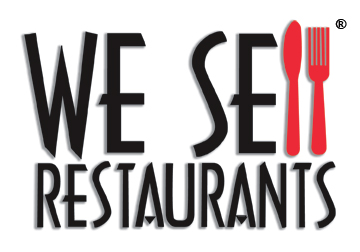
 404-800-6700
404-800-6700.png)
